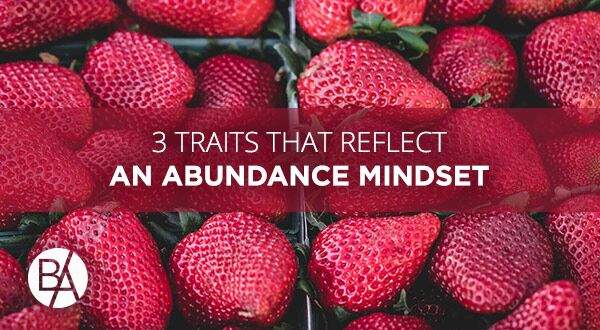11 Habits You Need to Stop

“Simple daily disciplines – little productive actions, repeated consistently over time – add up to the difference between failure and success.”
– Jeff Olson, The Slight Edge
This quote exemplifies exactly why it’s important to pay attention and be intentional with how you spend your time. If you spend most of your time laying around, watching TV, aimlessly reacting to what happens to you in your life, you’re not going to be as happy and fulfilled as you could be if you intentionally did actions that moved you toward your goals.
Specifically, there are 11 deadly habits that I think should be avoided if you want to lead a fulfilling life.
1. Stop watching too much TV
If you spend too much time watching TV, you are wasting your life away. I feel really strongly about this one. I don’t have cable, and while I do watch some shows on Netflix, it’s few and far between. I only watch TV after I really am relaxed and need a break. I’m also careful not to turn on the TV right when I get home. I find that if I do this, I’m sucked in.
So, start to pay attention to how much TV you’re watching. If you think it’s too much, cut back. Limit your TV intake to 30 minutes to 1 hour per day, if possible.
2. Stop talking about people behind their backs
Talking about someone behind her back is a bad idea for a number of reasons. First, if someone is talking to you behind someone else’s back, you can bet on it that they also will talk about you.
Second, did you know that when you talk about someone negatively, the person who you’re talking to will associate you with those qualities, not the person you’re talking about? For example, if you say that you tell your friend Amanda that your friend Beth is super annoying, then Amanda will actually subconsciously associate you with being annoying. Weird, but it happens (I read a book about it.. ).
And finally, it’s just not nice to talk about people behind their backs. So, instead, even when you think about someone negatively, bite your tongue and choose not to say it. Over time, you’ll get in the habit of saying nicer things, which will attract positive people in your life.
3. Don’t be a scarcity thinker
Scarcity thinking means that you think life is limited and only has so much to offer. People who have a scarcity mindset think there is always a winner and a loser (not two winners), they are exclusive (not inclusive), they are stingy with their knowledge, they resent competition, they are fearful, entitled and think small.
On the other hand, someone who is an abundance thinker believes there is always more to come, they invite and welcome competition, they default to trust, they think big, are thankful, and confident.
Be an abundance thinker.
4. Stop living paycheck to paycheck
Whatever you have to do to make it happen, stop living paycheck to paycheck. If it means moving to a smaller house, selling one of your cars, or stopping going out to eat altogether – do it.
The peace that comes with having financial margin is far more valuable than any of these things. And remember, it’s better to want than to owe.
5. Don’t blame anyone else for your circumstances
If you have a past that is less than perfect, whether it’s from a ruined relationship, a tough child, or something else that was completely out of your control, it is really easy to blame the person at fault. But you need to not do this.
Even if your circumstances are the result of someone else doing something to you, it’s only hurting you by blaming them. You will be stuck (probably in a scarcity mindset) not living your life to the fullest. Whatever it takes, do what you need to do to let go.
6. Don’t be your own worst enemy
If you’re a high achiever, there’s a good chance that you are also really hard on yourself. This is a habit that can be really detrimental to you in the long run.
Whatever phase of life you’re in, it’s important that you find contentment and practice being at peace regardless of what is going on around you. This will bring you greater joy.
7. Stop trying to help people who don’t ask for your help
Remember that it’s important to take care of yourself. You should be your number one priority (I’m talking about adults here – not your newborn child, who obviously needs your help). When it comes to grownups – don’t help people who don’t ask for help. If you are trying to change someone or “fix” them, I promise you that this is a battle you will lose (and it will be exhausting). Remember, if you are in a position of offering someone help and they didn’t ask for it, take a step back and let that person make their own choices.
8. Stop comparing yourself to other people
Stop comparing yourself to other people. This is particularly hard with social media because social media usually shows the highlights of people’s lives (not the whole picture).
Whenever you catch yourself comparing yourself to someone else, stop. Remember that your only competition is yourself. Someone is completely different than you and you shouldn’t compare your story with theirs.
9. Don’t wait to celebrate small wins
If you are on a long journey, like quitting smoking or paying off massive debt (something that takes a long time and is hard), don’t make the mistake of waiting to celebrate until you’ve accomplished your goal.
This is really hard for me. I started with $206k of student loan debt from law school, and I’m down to $122k. That’s a huge chunk gone, but I still find it hard to celebrate because I want it all gone. So, this habit is something I am working on.
By celebrating your smaller successes, you will attract more success and accomplish your goal even faster with more momentum.
10. Don’t say “yes” when you want to say “no”
If you want to say no to something, then say no. You need to learn how to say what you want to say. This isn’t a small thing. It’s really important in life for you to be able to make wise decisions that move you toward what you want in life.
If you say yes to the things you want to say no to, you won’t be able to say yes to the things you want to say yes to because there is only so much time in the day.
Part of being a mature, deep person means knowing who you are and committing, with certainty and conviction to your personal choices.
11. Don’t think you don’t have what it takes
My dad told me from a very young age that I could do anything I wanted to. He told me it didn’t matter that I wasn’t that smart and wasn’t in honors classes because I could just keep going and eventually out pace everyone if I stuck with it. He was right.
You don’t have to be the brightest or the most skilled to succeed. You can succeed and you can win with whatever you’re fighting for. The best asset that you have is you. And you have to know that and believe in yourself to make it happen.
A Final Note
This post is all about what not to do. It seems negative at first glance, but really it’s positive. By stopping harmful habits, you will start doing positive habits. You’ll find yourself being more productive, nicer, and happier. Sometimes it takes nixing the bad stuff to get to the good stuff!
What habits have you stopped (or do you need to stop)?

![]()

































































